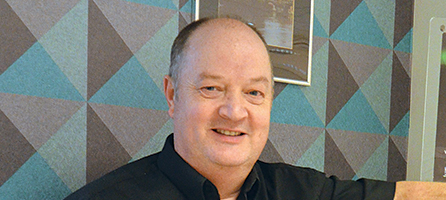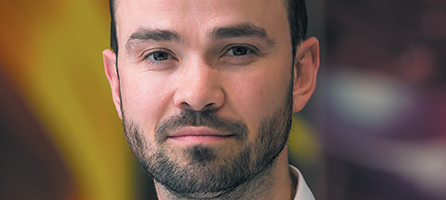
Paul French, chief executive officer, Metamark
Vehicle wrapping, as you say, has been a strong growth market for sign-makers and print-service-providers for some years. Here at Metamark, our data suggests that the growth has been driven in the main by the pace of the adoption of wrapping by the market. Someone sees a wrap, likes it, and then wants the same treatment for their own fleet vehicles.
The capacity of the industry to supply this increased demand has not grown at quite the same pace. That is because wrapping is not what you might call a ?canned application?. You cannot push a button and make a wrap happen, it is a hands-on skill and there is a learning curve to negotiate.
One mission we set ourselves at Metamark was flattening the learning curve and, as a subset of that goal, changing the economics to make wrapping more approachable from the perspective of the sign-maker, and more affordable still for the market. That meant a complete rethink and designing a wrapping film from the ground up. We attacked the problem on several fronts and the one that made it, and made it to market, was Metawrap MD-X.

We attacked the problem on several fronts and the one that made it, and made it to market, was Metawrap MD-X”
MD-X is helping maintain the pace of growth in wrapping by leaving the difficulties that come with legacy, or traditional cast products, behind, and by changing the whole pricing dynamic. MD-X is easy to work with, especially so when it has its matching laminate fitted, and it makes for more affordable wraps.
New entrants to the market, and yes, there is room for you, will find MD-X easy to learn and it will help you produce great results. It prints brilliantly and endures everything wind and weather throw at it. Your opportunity in wrapping with Metawrap MD-X is getting in, hitting the ground running, and making a name for yourself in a profitable and growing sector.
Suit any requirement

John de la Roche, national sales manager, Hybrid Services
From Mimaki’s point of view, key opportunities exist for sign-makers and print-service-providers within the vehicle graphics sector. Mimaki offers a range of devices, including integrated printer/cutters such as the CJV Series, or the high production, stand-alone, yet still workflow-integrated systems made up of a JV printer and CG cutting plotter to suit a variety of volume and budget requirements.
A solution such as the integrated CJV150-75 is particularly beneficial to new entrants thanks to attractive hardware costs, ease of use, and the ability to output to an ever-increasing range of specialist wrapping media.
The CJV150-75 has a generous print width of 800mm which is enough to accommodate the panel sizes required for vehicle wraps, and thanks to its inbuilt cutter, has added functionality too. It is competitively priced and, of course, enables start-up graphics businesses to produce many other applications alongside vehicle liveries.
Mimaki’s unique orange solvent ink—available for all the company’s latest printers and printer/cutters—is a powerful tool in matching popular corporate colours, with orange hues found in many motorcycle and car brand liveries. The increased gamut ensures hard to reach shades are achievable, enabling print providers to accurately reproduce important corporate elements within vibrant and attractive vehicle graphics.

There is no sign of a slowdown in the desire from companies to creatively present their brand in ever more engaging ways”
It is also important to remember that a good percentage of vehicle markings are entirely made up of simple vinyl graphics, be it self-coloured material or a special effect film. With a Mimaki printer/cutter, the two technologies work very well together in terms of delivering a printed graphic along with cut lettering or detailing.
There is no sign of a slowdown in the desire from companies to creatively present their brand in ever more engaging ways and vehicle graphics will continue to play an important part in this.
Hands-on experience

Joe Wigzell, academy and creative centre manager, Roland DG UK
Roland DG offers a range of technology and resources that can support businesses that are both already established in the vehicle wrapping industry or looking to enter this growing market.
The range of Roland DG products available that can be utilised for vehicle wrapping is extensive. Printers that can serve high-volume demand, providing both speed and image quality are the ideal machine for this type of work.
These include the Soljet EJ-640 or Versa Express RF-640 printers, which are perfect for businesses focusing solely on vehicle wrapping or high-volume printing. These products can be used in collaboration with a large-format vinyl cutter such as the Camm-1 GR-640, which enables precision cutting on an easy-to-operate machine, enabling the use of non-printable films, adding details or single colour vehicle livery.
If a business is already using existing Roland DG technology and is looking to expand into vehicle wrapping, without having to invest in another printer, this is also possible. The True Vis VG series or Soljet Pro 4 XR-640 printer/cutters would work well across all sectors. Ideally these machines should have the capacity to print 54" (137cm), which makes full wraps much easier, but this is not a necessity. Smaller devices can be used by tiling designs, or for smaller verticals/panels etc. Both produce high quality print, with the added benefit of an in-built cutter, increasing versatility is an added-bonus for multiple uses.

The Roland DG Academy offers a two-day vehicle wrapping course”
For those entering the industry for the first time it is worth noting that vehicle wrapping is not just a case of sticking vinyl onto a car. To enable companies and individuals new to the business to understand the process, the Roland DG Academy offers a two-day vehicle wrapping course. Learning components from the course include all elements of the vehicle wrapping process from design and print, through to gaining some hands-on experience and the opportunity to talk to a professional with lots of experience in the field. There is also an opportunity to study software that can be used across Roland DG products.
In order to provide a unique selling point, businesses should look to diversify in order to stand out from the competition. Mixing technologies to create interesting effects such as using print and cut, or print machines to create vinyl underlays, which are then wrapped over embossed effects, or using new materials such as velvet or reflective wraps which can be utilised to great effect, provide a fresh perspective and extra choice for consumers.
Endless innovation

CaptionTim Beyer, technical expert, 3M
At 3M, we are helping to maintain this trend by constantly innovating in order to create new and exciting products that will improve our stockists’ offerings.
The reason so many traditional sign-makers and print-service providers have diversified over time into vehicle wrapping is clear: traditional sign-making is a highly competitive industry, so the search for a revenue stream from a different market is vital.
Most which have expanded their offering in this way have naturally focused on vehicle wrapping for vans and other commercial vehicles, as this creates cross-selling opportunities with their existing customers, as well as the opportunity to win new ones.
For this market, we have developed a number of innovative products that keep our stockists ahead of the curve.
To take a relatively early example, in 2012 we created the world’s first non-PVC, high-performing wrap films—Envision print wrap films by 3M—which can help vehicle wrappers to meet their sustainability targets. More recently, we added various products to this range, which are compatible with solvent printers.
Another example of recent 3M innovation helping vehicle wrappers—this time to make wrapping easier and thus quicker—is the introduction of products using micro Comply adhesive, such as the IJ180mC and 180mC series of print wrap films by 3M. These ranges feature non-visible air release channels with micro technology for fast, easy, and bubble-free graphic installations and excellent hiding power, among many other benefits.

Traditional sign-making is a highly competitive industry, so the search for a revenue stream from
a different market is vital”
The new 180mC LSE print wrap film by 3M features a modified adhesive for low surface energy substrates, making it possible to cover traditionally challenging plastics and coatings. This makes full van wraps achievable, including plastics, bumpers, and wing mirrors.
We offer products to help British sign-makers diversify further still, by building on the success of such countries as Italy and branching into the interiors market. Just as vehicle wrapping requires similar skills and equipment to traditional sign-making and printing, so too does surface finishing for interior design.
This is something that Di-Noc architectural finishes by 3M can help with.
Your text here...